General Guidelines for all procedures:
Always have your child carefully follow all guidelines provided by our office and, most importantly, practice good oral hygiene. Additional instructions following various types of treatment are listed below. Please click on the below topics for detailed instructions. In the event of an emergency, please call our office. If your child is experiencing a serious or life-threatening emergency, please call 911 or visit the nearest emergency room.
Instructions Following Preventive Visits
Your child may experience some tenderness for a day or two. If this persists, you may have them rinse with warm salt water 2-3 times per day. For discomfort you may also give your child Children’s Tylenol, Advil or Motrin as directed for the age and weight of your child.
Patients should not rinse, eat, or drink for at least 30 minutes to maximize the fluoride’s direct contact with the teeth.
Your child may notice that the tooth feels different because of the new sealant. The teeth and bite will feel normal again in a couple of days. Your child should avoid sticky, crunchy, or hard foods for 24 hours following the placement of the sealant.
Instructions Following Dental Procedures
Monitor your child closely for approximately two hours following the appointment. It is often wise to keep your child on a liquid or soft diet until the anesthetic has worn off. Remind your child to refrain from touching, biting, sucking, or playing with the numb area.
Make certain that your child is not eating or chewing while numb. Please make sure they do not bite their cheeks, lips, or tongue as doing so can cause injury to the soft tissue. Your child should avoid sticky, crunchy, or hard foods for 24 hours. If your child experiences sensitivity or discomfort, you may give your child Children’s Tylenol, Advil or Motrin as directed for the age and weight of your child.
If your child is experiencing sensitivity after this treatment, you may give your child Children’s Tylenol, Advil or Motrin as directed for the age and weight of your child. If sensitivity or discomfort continues for more than 24 hours, please contact our office.
Please instruct your child not to rinse, spit, or drink through a straw. Have them keep their fingers and tongue away from the area. If unusual or sustained bleeding occurs, place slightly moistened cotton gauze firmly over the extraction area, and bite down or hold in place for thirty minutes. Repeat every thirty minutes until the area is no longer bleeding. Maintain a soft diet for a day or two or until the child feels comfortable eating normally again. Avoid strenuous exercise and physical activity for the rest of the day after the extraction. For discomfort use Children’s Tylenol, Advil, or Motrin as directed for the age and weight of your child. If sensitivity or discomfort continues for more than 24 hours, please contact our office.
Instructions for Orthodontic Care
Having braces should not cause any major changes in your day-to-day activities. You can still dine out, sing, play a musical instrument, or have pictures taken. With proper care and maintenance, you can promote your oral health while on your way to a more beautiful smile.
Try to avoid foods that are particularly hard, chewy, crunchy, or sticky. These types of foods can loosen, bend or even break your brackets or appliances.
Examples of Foods to Avoid:
- Popcorn
- Tortilla Chips, Pretzels, Cheetos
- Hard Candies
- Chewing Gum
- Nuts
- Granola Bars
- Raw Vegetables
- Whole Fruits such as Apples, Pears, etc.
- Hard Tacos
Try to choose softer foods, and cut your foods into smaller pieces before eating rather than trying to bite through them. Chop whole fruits such as apples or pears into bite-sized pieces before eating, and please avoid chewing gum and chewing on ice.
After eating always check your braces for any loose or broken appliances. If you find any problems, please give our office a call so that we can make any needed adjustments.
Carefully follow all instructions you are given regarding your dental care. Specific steps may vary depending on the type of braces you have. Be sure to brush thoroughly after any meal or snack. It is important to keep your teeth and braces as clean as possible to avoid potential problems. Also, rinse with water or mouthwash after brushing. It’s a good idea to carry a travel toothbrush when you will be away from home. Before going to bed at night, be sure to brush thoroughly and floss carefully. It may take a little extra time, but this is a critical step in maintaining your oral hygiene to a better smile and healthier teeth.
Use a soft rounded-bristle toothbrush that is in good condition. Toothbrushes will wear out faster and need to be replaced more often when wearing braces, so keep some spare toothbrushes on hand. When brushing, you should also brush your tongue and rinse thoroughly when done.
Flossing is an integral part of good oral hygiene. With braces, it may take a little more time and practice, and a floss threader may be necessary to get the floss under the archwire. Make sure you clean along and under the gum lines with floss each night before bed. After you have properly brushed and flossed, your braces should look clean and shiny, making it easy to see the edges of the braces.
During orthodontic treatment, the doctor may use elastics to assist your braces in making adjustments to your teeth and bite. Also known as rubber bands, elastics are typically attached to brackets on the upper and lower teeth and use tension to create changes in the teeth and bite.
You should always wear your elastics as directed. You may remove your elastics when eating and brushing, and you should always replace your elastics with new ones after eating or brushing. Only wearing your elastics occasionally will prolong treatment and also cause any tenderness to persist.
You may experience some tenderness when first wearing elastics, but the tenderness should subside after a few days. Over-the-counter medications like Ibuprofen should help, but if the soreness continues for more than a week, please give us a call.
If an elastic breaks, please replace both the broken one and the adjacent elastic to ensure the same amount of force is applied on each side. You should always carry extra elastics with you in case one should break. If you think you might run out before your next appointment, please stop by our office for more elastics, or give our office a call, and we can mail extras to you.
Dental wax can be very helpful with any areas that are irritating your mouth or gums. This can be especially helpful at night when sleeping when your mouth may get drier than during the day time when you can regularly hydrate.
- Please wear your appliance at all times, even while sleeping, or as instructed by our office. Doing so will help reduce treatment time and will also ensure the best possible results from your orthodontic treatment.
- Please be sure to bring your appliance to every orthodontic appointment.
- Please clean your removable device both morning and night to remove dental plaque. You can clean the appliance with a toothbrush and toothpaste.
- Please place your removable device in the provided case any time it is not being worn.
- If you have pets, please do not place your removable device anywhere that your pets can reach them. Pets are attracted to saliva and would enjoy chewing on your appliance!
- Please do not place your appliance in or on a napkin or tissue. Many appliances have accidentally been thrown out this way!
- You may remove your appliance while participating in physical activities, but be sure to wear a mouthguard to protect your teeth, gums, and lips.
Do
- Use your fingers to put your aligners in place. First place the aligners over your front teeth, and then use your fingers to push the aligner down gently over your molars. When aligners are correctly inserted, they will fit all the way down on the teeth, with no space between the top of the aligners and the top of the teeth. Aligners will fit tightly at first but should fit well at the end of the two week period.
- Keep aligners in except when flossing, brushing, eating. It’s also best to remove the aligners when drinking warm beverages such as coffee or tea.
- Remove the aligner by pulling it off both sides of your back teeth simultaneously then lifting it off of your front teeth. Place your aligners in the case we provided any time they are not being worn.
- Clean aligners with a toothbrush and toothpaste.
- Wear each set of aligners for two weeks unless our office directs you to vary from this schedule.
- Wear aligners in the correct numerical order. (Each aligner is labeled by number and with a U or an L to designate upper or lower.)
- Keep all of your old aligners and bring them to your orthodontic appointments.
Don’t
- Don’t place your aligners in or on a napkin or tissue. Many aligners have accidentally been thrown out this way!
- Don’t use your teeth to “bite” your aligners into place.
- If you have pets, don’t place your aligners anywhere that your pets can reach them. Pets are attracted to saliva and would enjoy chewing on your Invisalign trays!
- Do not use Denture cleaner, alcohol, or bleach to clean your aligners.
- Do not use boiling water or warm water on your aligners.
- Don’t chew gum with your aligners in.
- It would be best not to smoke while wearing aligners. The smoke can stain the aligners as well as your teeth.
Just in Case
- If you lose the tab attached to your tooth that helps the aligner snap on, please call our office right away so that we can determine if you need to come in before your next scheduled appointment.
- If you lose one of your aligner trays, please wear the next tray if you have it. If you do not have the next tray, please wear the previous tray. It is extremely important to use a tray to keep teeth from shifting. Call our office to let us know which tray was lost so that we can determine if a replacement tray is needed. There will be a fee if replacement trays are required.
Keep these materials on hand to help with the most common orthodontic maintenance and minor emergencies:
- Interdental or Proxabrushes fit between teeth and help patients to clean around wires without damaging them.
- Non-medicated orthodontic relief wax can be placed over brackets or wires that may be irritating gum tissues. This can be especially helpful at night when sleeping when your mouth may get drier than during the day time when you can regularly hydrate.
- Antibacterial Mouthwash can be used to reduce inflammation and prevent infection. For minor sores in the mouth, Peroxyl, an antiseptic rinse containing hydrogen peroxide may be used up to 4 times per day after brushing. Refer to the product label for specific instructions.
- Dental floss, an interproximal brush or a toothpick can be used for removing food that gets caught between teeth or wires.
- Sterile tweezers can be used to replace orthodontic rubber bands that have come off.
- A Q-tip or pencil eraser can be used to push a wire up against a tooth if it has come loose and is irritating the cheeks or gums. If it is not possible to reposition the wire so it is more comfortable, place wax over the end of the wire and call our office so that we can set a time to have the wire adjusted and put back into place.
- Salt is used for warm salt-water rinses, which help heal sore gums and tissues in the mouth.
- Non-prescription pain relievers, such as acetaminophen or ibuprofen, can help with the temporary discomfort that sometimes occurs for the first day or two after an orthodontic adjustment.
- Topical Anesthetic Treatments, such as Orabase or Ora-Gel, can be applied with with a Q-tip to any abrasions or sores in the mouth should they occur.



